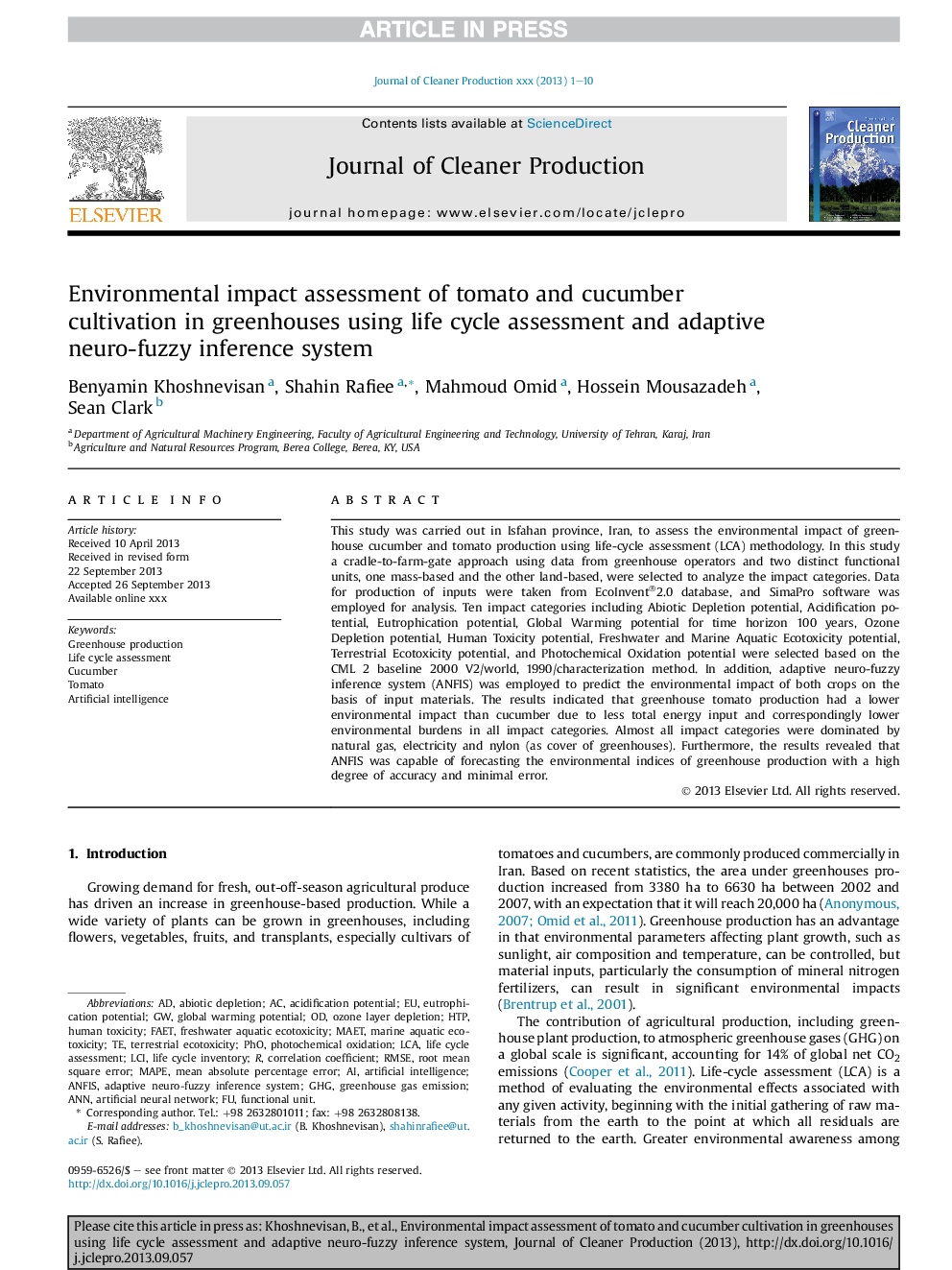| Article ID | Journal | Published Year | Pages | File Type |
|---|---|---|---|---|
| 8106363 | Journal of Cleaner Production | 2014 | 10 Pages |
Abstract
This study was carried out in Isfahan province, Iran, to assess the environmental impact of greenhouse cucumber and tomato production using life-cycle assessment (LCA) methodology. In this study a cradle-to-farm-gate approach using data from greenhouse operators and two distinct functional units, one mass-based and the other land-based, were selected to analyze the impact categories. Data for production of inputs were taken from EcoInvent®2.0 database, and SimaPro software was employed for analysis. Ten impact categories including Abiotic Depletion potential, Acidification potential, Eutrophication potential, Global Warming potential for time horizon 100 years, Ozone Depletion potential, Human Toxicity potential, Freshwater and Marine Aquatic Ecotoxicity potential, Terrestrial Ecotoxicity potential, and Photochemical Oxidation potential were selected based on the CML 2 baseline 2000 V2/world, 1990/characterization method. In addition, adaptive neuro-fuzzy inference system (ANFIS) was employed to predict the environmental impact of both crops on the basis of input materials. The results indicated that greenhouse tomato production had a lower environmental impact than cucumber due to less total energy input and correspondingly lower environmental burdens in all impact categories. Almost all impact categories were dominated by natural gas, electricity and nylon (as cover of greenhouses). Furthermore, the results revealed that ANFIS was capable of forecasting the environmental indices of greenhouse production with a high degree of accuracy and minimal error.
Keywords
LCIANNGHGRMSEMAPEHTPANFISLCALife Cycle AssessmentGreenhouse gas emissionPhotochemical oxidationAbiotic depletionOzone layer depletionGreenhouse productionCucumberRoot mean square errorHuman toxicityTerrestrial ecotoxicityAdaptive neuro-fuzzy inference systemArtificial Neural NetworkCorrelation coefficientphoLife Cycle Inventorymean absolute percentage errorartificial intelligencefunctional unitAcidification Potentialglobal warming potentialEutrophication potentialTomato
Related Topics
Physical Sciences and Engineering
Energy
Renewable Energy, Sustainability and the Environment
Authors
Benyamin Khoshnevisan, Shahin Rafiee, Mahmoud Omid, Hossein Mousazadeh, Sean Clark,
